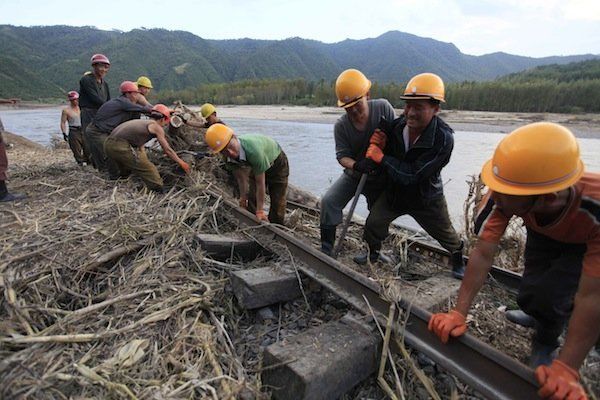Southern China braces for deadly typhoon
HONG KONG: Residents stockpiled food and ships were ordered to dock as southern China braced for a typhoon Thursday that has already lashed the northern Philippines amid floods that have killed more than 70 people across Asia.
Typhoon Megi packed winds of 140 miles per hour (225 kilometers per hour) when it struck the Philippines on Monday. Philippine officials reported 20 deaths, including several people who drowned after being pinned by fallen trees. The storm damaged thousands of homes and flooded vast areas of rice and corn fields.
Late Wednesday, Megi was about 350 miles (550 kilometers) southeast of the southern financial hub of Hong Kong and expected to eventually hit the southern Chinese coast, the Hong Kong Observatory said on its website.
The storm’s winds have weakened to 110 mph (175 kph), but are expected to build strength over the next two days before losing steam again Saturday, when the typhoon is projected to make landfall in China’s Guangdong province, the observatory said.
In Guangdong, officials have ordered all fishing boats back to shore, put the provincial flood control headquarters on alert and warned that reservoirs should be watched, China’s official Xinhua News Agency reported Wednesday. In the southern island province of Hainan, residents rushed to supermarkets to stock up on food, vegetables and bottled water, Xinhua said.
In Hong Kong, the mood was calmer in the densely populated city of 7 million whose infrastructure has traditionally held up well against the annual summer barrage of typhoons. Still, the Hong Kong Observatory urged residents to make sure their windows could be properly bolted, avoid the coastline and refrain from water sports. It also ordered small vessels to return to shore.
Taiwan’s Central Weather Bureau said Thursday that Typhoon Megi was unlikely to make landfall on the island but warned residents in southern and eastern Taiwan to brace for heavy rains and landslides. It also cautioned ships off the southern and western parts of the island to be on the lookout out for rough seas.
In the Philippines, more than 215,000 people were affected by the typhoon, including 10,300 people who fled to evacuation centers, officials said. About $30 million (1.3 billion pesos) worth of infrastructure and crops were damaged and nearly 5,000 houses were damaged or destroyed by Megi’s ferocious wind, according to the government’s main disaster-response agency.
Meanwhile, in Vietnam, where recent flooding from a different weather system has killed at least 45 people over the past week, soldiers and police found a bus that was carrying dozens of people when it was washed away by flood waters, disaster officials said Wednesday. It was located on a river bed, half a mile (one kilometer) downstream from where it was yanked off the road. Twenty people who failed to escape the bus before it was inundated are missing, presumed dead.
Up to 4.5 feet (1.4 meters) of rain pounded the region in the past week, submerging more than 220,000 houses and forcing more than 173,000 people to flee their homes, according to the national flood and storm control committee.
In Thailand, floods have killed nine people since the weekend. Runoff of those waters were due to sweep down the Chao Phraya river into the capital, Bangkok, late Wednesday.
Bangkok Deputy Gov. Porntep Techaipaibul said that officials have prepared more than 4 million sandbags amid fears of serious floods in parts of the city, particularly during high tides next week.
Authorities say the flooding has affected nearly 4,000 villages in 19 eastern, central and northeastern provinces. More heavy rains — the tail end of the annual monsoon — are forecast, including in some central provinces.



